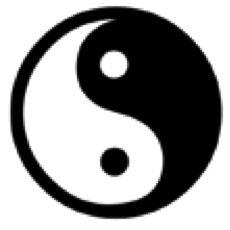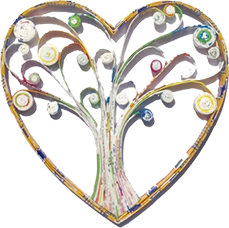During these challenging times, it is even more important to practice a healthy lifestyle. In addition to eating nutritious foods, working out and drinking enough water, my yoga and mindfulness practice continue to help me stay energized. In this mindful blog, I want to go beyond nutrition and exercise to chat about energy management.
Wellness is multidimensional and it’s also complex. Energy management is an important part of wellness integration. It is possible to practice a healthy lifestyle and still feel edgy, uptight and anxious. Why? Because we are human beings. You can follow the script of what your doctor recommends and still feel vulnerable to energy drains. First of all, there is normal stress in our daily lives. Right now there is also normal anxiety and excitement as many people talk to each other about all the uncertainty. You may become impatient with a friend, family member or colleague and react in a way that you later regret. Everyone makes mistakes once in a while. However, the more we train ourselves to manage our energy, the easier it becomes to respond to situations more skillfully.
Part of the challenge is learning to catch ourselves when we are “other than here”. We may experience worries about the future or get hung up on something that happened in the past. We can get stuck on memory, frustrated by a situation, triggered by a certain incident, or even resentful towards a particular person. These types of energy leaks can increase our level of stress and impact the immune system. Leaking energy regularly may contribute to fatigue, a cold, illness, injury, or a sense of feeling overwhelmed. In this state, it can be difficult to be productive and creative.
With more people connecting virtually, some people are finding themselves “bumping heads” even when they aren’t in the same room. Poor energy management has a cost. If blood doesn’t circulate at just the right pressure and speed to all parts and extremities of the body, that body’s immune system may be challenged. In the same way, if energy doesn’t flow freely through your relationships, the “symbolic” immune system of your social circle may be challenged.
These costs are hidden as there isn’t a line on the balance sheet to account for poor energy management. Nothing shows up in our account saying “lost productivity due to poor energy management”. However, the costs are real. If you are given $100 a day of energy, and your financing $60 into a memory that you can’t let go of, $25 into a negative thought, $10 into fear about the future, and you’ve got $5 left for today but waste it as you leak $7 of your energy on a person who you’re unable to forgive, then you’re in $2 debt and this can impact your health and well-being. If you spend too much time complaining to your friends, you may even drain their energy.
The best way to stop leaking energy is to learn from it. When we focus on our own energy first and foremost, we learn to turn around triggers and live more in present time. One technique is what I call “TTT” (Transform Triggers into Teachers). Learn “what” rather than “who” gets to you. You can practice completing the following sentences: This person’s behaviour is getting to me and from this experience, I am learning _____” or “This person’s behaviour represents a certain type of situation that makes me feel_____.” Once you fill in the sentence, you get yourself back in the now and stop leaking energy.
When you talk about a negative situation, emphasize what you learned from the experience, or what you are in the process of learning. When you chat with your friends, share the lessons you are working to embrace and you change the climate of the conversation. It may also help to decrease the frequency with which you use the word “issues”. Consider using the word “challenges” instead if this might be appropriate. Put less focus on the problem and give more attention to possible solutions. Through energy management, we guide ourselves and those we interact with to thrive at the cellular level.
One strategy to manage our energy is to create yin-yang harmony. We each have feminine and masculine qualities playing out in our daily lives. In yoga, we call this Yin and Yang. Yin is our feminine ‘pull’ energy. Yang is our masculine ‘push’ energy. We don’t need 50 percent Yin and 50 percent Yang throughout the working day. What we need is constant movement – the ability to shift between our ‘push’ and ‘pull’ energy as needs and desires change.
Our feminine energy is the ability to be flexible, to go with the flow, to surrender to the moment, to be open and receptive to different viewpoints, to embrace situations as they arise, and to let situations unfold without attempting to control the outcome. This is our Yin essence. It brings us into the now, allowing us to connect more intimately with the moment and align with the ‘be’ rather than the ‘do’. For example, when we feel frustration, we can embrace this emotion by allowing ourselves to feel the frustration fully, knowing it is okay to be with this emotion, trusting that the frustration is here for a purpose. It can be perceived as a supportive energy, showing us that whatever we’re responding to has meaning, and we don’t necessarily have to figure out what that message might be; we just need to be present with the frustration. In other words, “feel” to “heal”.
The Yin essence is to trust the experience, realizing that it’s necessary to be vulnerable at times. By giving ourselves permission to feel our frustration throughout our entire body, we allow it move more freely through our system. If we deny the frustration and shift it before feeling it fully, then it may just get stored in our body, challenge our immune system and show up later as tension or illness. Other circumstances in our day require Yang instinct, our masculine energy. We can’t be in the present so much that we fail to think about the future. We need to stay grounded in the practical world and be able to follow rules and policies. It is useful to rely on our Yang instinct to create specific goals, give direction, take initiative, and set boundaries with intent. We need to be able to write outlines, fill out forms, plan budgets, and pay the bills. These tasks require a more aggressive ‘push’ energy, our masculine instinct to control. Male or female, we all need a certain degree of push in our life.
The art and skill is to consciously change the Yin/Yang ratio. For example, the choice to speak up or stay silent is always an ongoing challenge. Sometimes it’s better to be patient, listen and keep our thoughts to ourself in the moment. Other times we may feel it’s more important to assert ourselves and speak up. When we learn the dance of ‘pull’ and ‘push’ and consciously shift our Yin and Yang, we naturally feel more vital. It’s when our Yin and Yang are out of whack that we feel on edge, off, out of sorts, confused, and frustrated.
Social distancing and the call to “stay home” offered many people the opportunity to drop into their yin energy. For some people, more time at home meant they were unable to do as much as they wanted to do, or their intuition started to come through so much that they started to reflect more and question the tasks and priorities they were working on. To come up with creative solutions, we need to listen more to our yin energy and tune into all that intuitive data that we download through signs, signals, conversations, dreams, hunches, strong feelings and clairvoyant flashes of insight. However, we also need to be able to activate our Yang energy to create new goals and take practical action steps forward. Working more with our yin energy, we learn to rest when we need to take break and we begin to enjoy more quality sleep. Working with our yang energy, we learn to take a step forward when we feel ready to take action.
Practice shifting between your ‘yin’ and ‘yang’ energy. If you find yourself relying on your Yang energy too often, interrupting others and being overly blunt, practice holding back; instead of saying what’s on your mind, focus on your breath for a moment and stay silent! To reinforce your Yin energy, consider moving around in more creative ways such as dancing or practice some yoga, meditation, or other activities that teach you to surrender to the moment. If you find yourself holding back too often and not being assertive enough, practice jumping into conversations and taking charge of situations. To reinforce your Yang energy, consider strength training or other activities that provide an aggressive outlet.
As we learn the dance of yin and yang and manage the ‘push’ and ‘pull’ in our daily lives, our relationships naturally improve and the benefits of a healthy lifestyle really kick in. We enjoy greater peace within and experience more energy and vitality from our exercise, food, water, health supplements, and mindful practices.

